Prospects for the development of domestic heavy flamethrower systems
In the near future, the newest heavy flame-throwing system TOS-2 "Tosochka" will be adopted by the Russian army. In addition, the TOS-1A "Solntsepek" combat vehicles available in the troops will be modernized. These measures are expected to ensure the quantitative and qualitative growth of the fleet of flamethrower systems in the ground forces.
Perspective sample
At the moment, the main attention is drawn to the promising flamethrower system TOS-2 "Tosochka". It represents an option for the further development of existing complexes with the transfer of fixed assets to a wheeled chassis and with the introduction of new systems. The launcher is supplemented with its own crane for transferring ammunition, new fire controls with enhanced capabilities are used, etc.
Prototypes of the TOS-2 system have already been demonstrated to the public and are undergoing the necessary tests, incl. in the conditions of military operation. So, in September last year, "Tosochki" were involved in the command-staff exercises "Kavkaz-2020". At the Kapustin Yar training ground, such combat vehicles showed their firepower and other qualities. It was reported that during the firing at the TOS-2 exercises with the TBS-M3 unguided projectile, the calculated characteristics of range and power were confirmed.
In mid-November, the chief of the RChBZ troops, Lieutenant-General Igor Kirillov, in an interview for Krasnaya Zvezda, said that TOS-2 had been taken into experimental military operation. Based on the results of the latter, the issue of adopting the system into service will be decided.
On February 24, 2021, Rostec announced the preparation of a new stage of inspections. At present, NPO Splav and Motovilikhinskiye Zavody are preparing a heavy flamethrower system to undergo state tests, which will begin this year.
New ammunition has been developed for TOS-2, and they will also be submitted for testing this year. This was reported on March 3 by TASS with reference to the leadership of NPK Tekhmash, which develops unguided projectiles. This year the enterprise will manufacture and supply an experimental batch of promising ammunition for experimental military tests.
Modernization of the existing
In mid-November, the chief of the RKhBZ troops revealed the details of another project in the field of heavy flamethrower systems. The industry was entrusted with the development of a project for the modernization of the "Solntsepek" complex in order to increase the main combat characteristics, from the power of ammunition to survivability on the battlefield.
Soon, the Ministry of Defense revealed some details of the modernization. By introducing new components, the modernized TOS-1A will increase protection against anti-tank weapons. It is also planned to reduce the time required for the transfer to a combat position and the opening of fire. A promising unguided projectile will increase the range and accuracy of fire, and at the same time, the affected area will grow. This will allow you to hit the target with less ammunition consumption.
New details of the project were reported in the media, citing sources in the industry. Thus, the updated TOS-1A will receive new communications equipment that will allow it to work in modern ground forces artillery control systems. It is also planned to integrate communication facilities of the so-called. private data transmission segment. Due to the new shells, the firing range will grow from the current 5-6 km to 15 km.
Processes of the future
From official sources and the press, it is known how the planned modernization of the fleet of flamethrower systems will be carried out. So, the renewal of "Solntsepek" will begin at the production level. New vehicles produced for the Russian army will initially receive a new set of instruments and components. In the future, the modernization of the available equipment in the troops will also start. These combat vehicles will be updated as planned repairs.
In the foreseeable future, it is planned to carry out the entire complex of tests of the new TOS-2 system. After that, "Tosochka" will be able to enter service and go into production, which will result in the re-equipment of parts of the RChBZ. Together with the TOS-2, the Russian army will receive new ammunition, which will also be used on the modernized TOS-1A.
Last fall, it was reported that the first serial "Tosochki" will go to serve in the Southern Military District. By 2025, the flamethrower units of the Southern Military District will completely switch to such equipment and will remain without TOS-1A tracked vehicles. This will increase mobility and better adapt equipment to the conditions of the region.
In other districts, flamethrower systems on a tank chassis will remain in service. Perhaps, in the future, they will be supplemented with TOS-2 wheel complexes, due to which it will be possible to increase the flexibility of use and obtain other advantages. However, the approach to rearmament, the timing of updating the fleet in combat units, the required number and other aspects of future programs remain unknown.
Technical advantages
According to the results of current projects, the RChBZ troops will have two types of modern flamethrower systems with their own advantages. Thanks to this, it will be possible to obtain a fairly high degree of unification - in terms of onboard equipment, ammunition, etc. At the same time, the difference in design and performance will be used to optimize the fleet of equipment in different regions with different conditions and to obtain maximum flexibility of use.
The main results of the two projects will be associated with the development and implementation of a new unguided missile with a thermobaric warhead. With its help, the maximum firing range will be increased to 15 km. This will allow you to attack targets at greater depths, and also reduce the likelihood of being hit by enemy retaliatory fire. In this respect, the upgraded Solntsepek and the new Tosochka have significant advantages over the systems of earlier versions.
Currently, the ground forces are introducing a unified tactical command and control system capable of effectively controlling the work of artillery. Flamethrower systems will also be integrated into such control loops, which will speed up preparation for firing and increase the accuracy of fire. The ability to connect to a closed data segment is expected to allow communication with any subscribers, up to the high command.
Prospects for Directions
The army is not going to give up heavy flamethrower systems. The development of the direction continues and becomes complex. At the same time, several new projects of various kinds are being developed, but with common ideas and components. All this suggests that the concept of the projects "Buratino", "Solntsepek" and "Tosochka" has justified itself, but needs further development and improvement.
The result of such processes in the near future will be the appearance of two modern combat vehicles and an update of the ammunition line. At the same time, it can be assumed that the development of these samples will not stop. However, so far the main task of the industry is to develop and bring to the troops actual models that have already shown their advantages. In the proposed configuration, TOS-1A and TOS-2 will remain relevant for a long time.
- Ryabov Kirill
- Ministry of Defense of the Russian Federation, NPK "Uralvagonzavod"
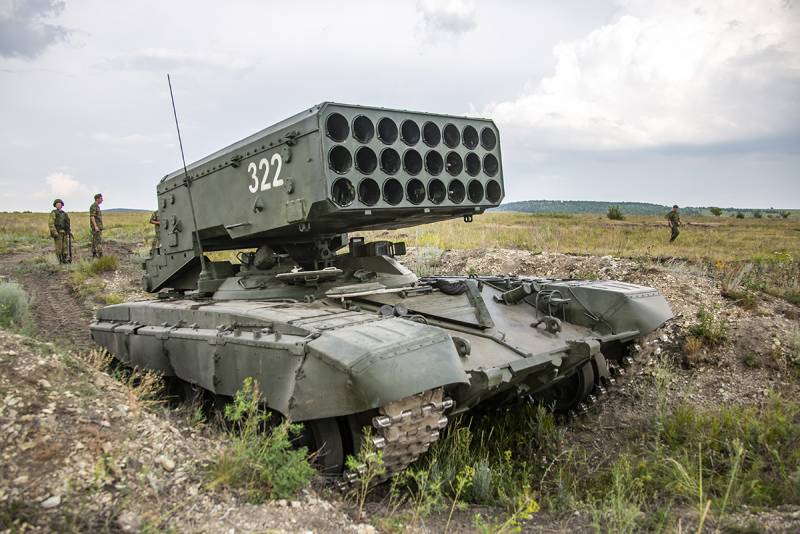
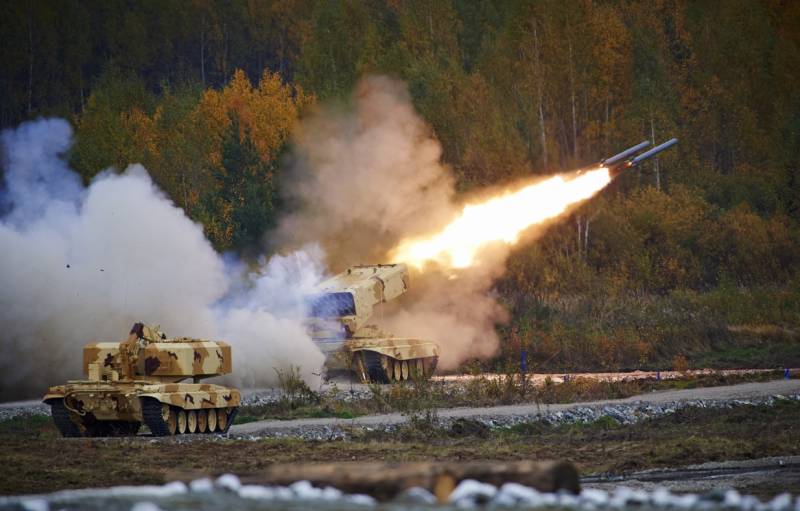
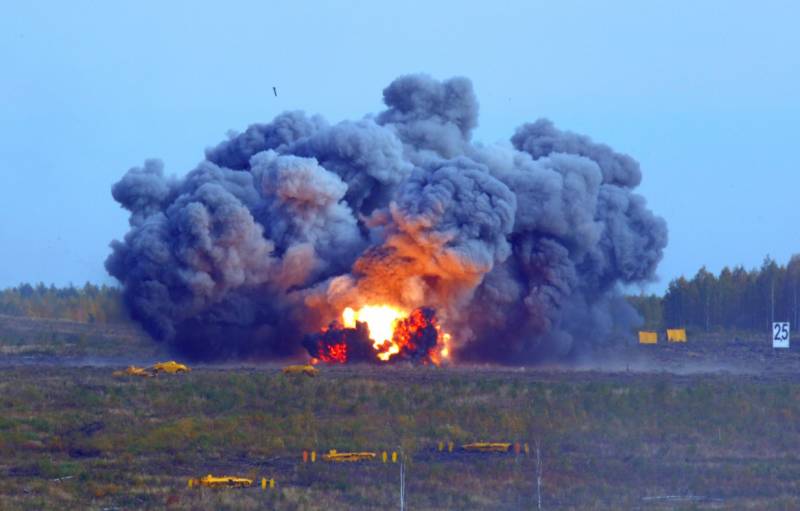
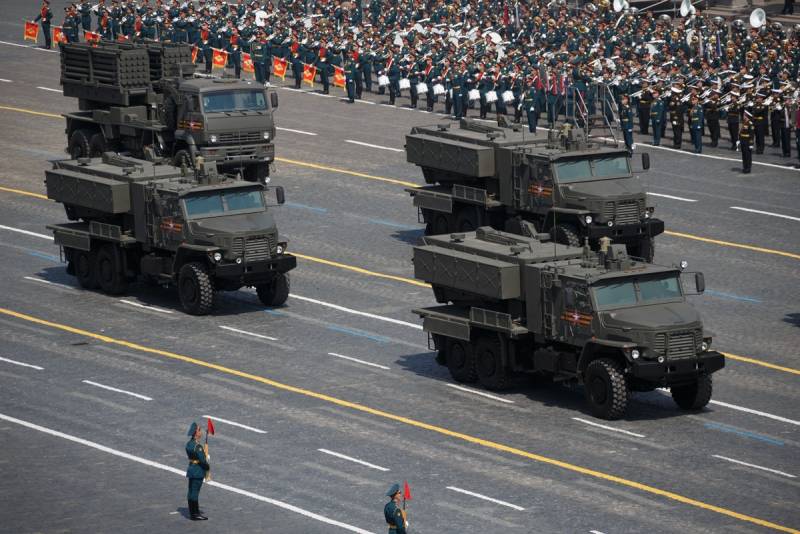
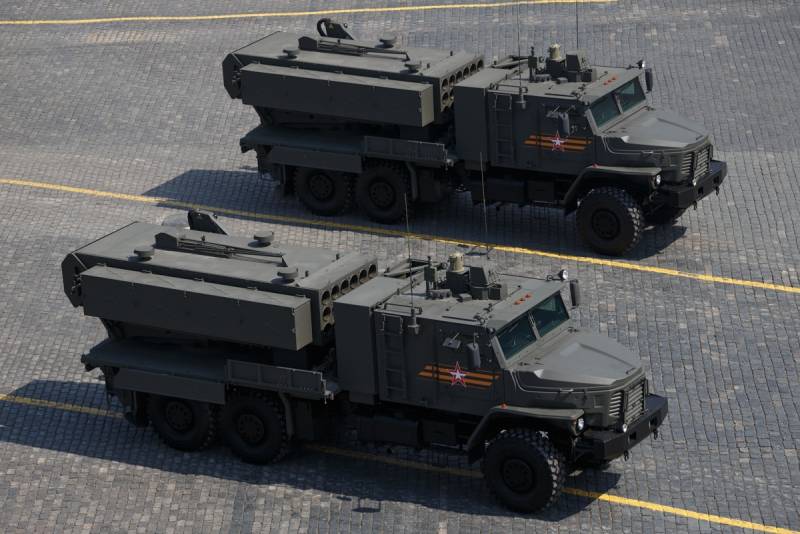
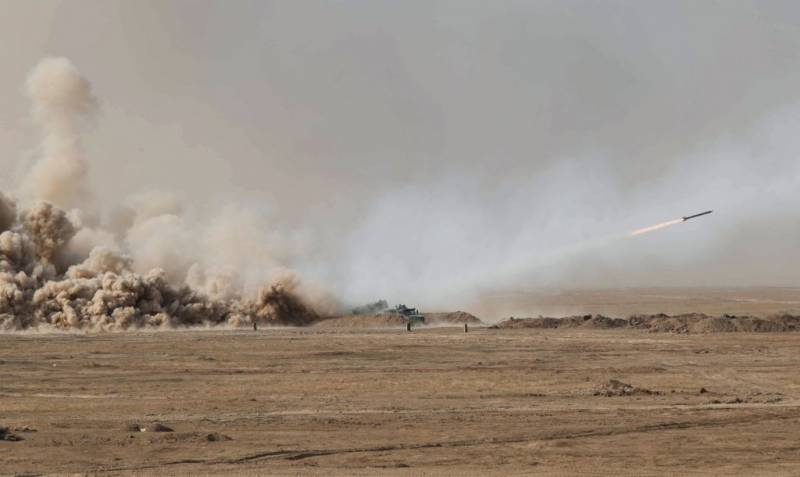
Information